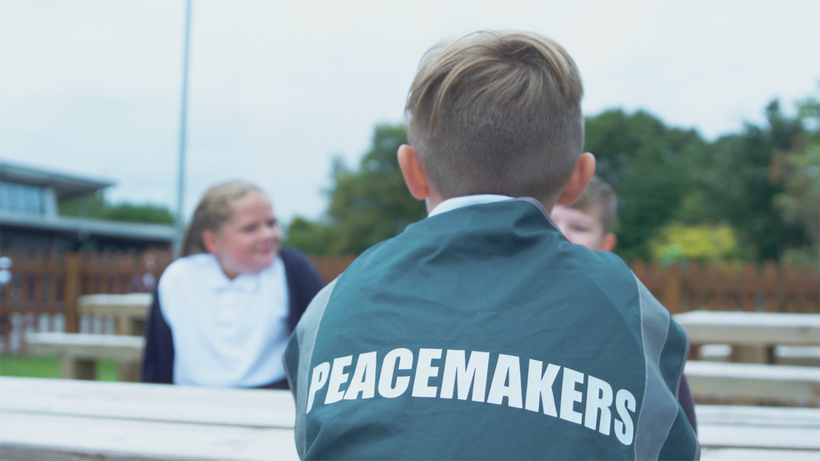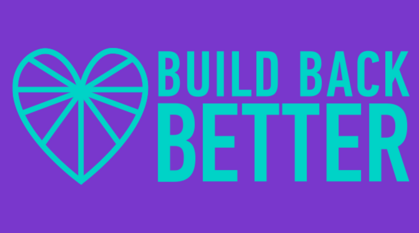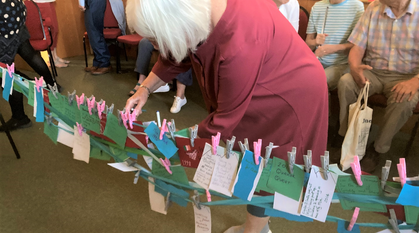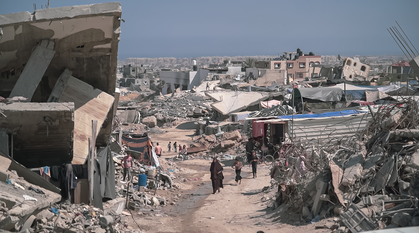From the white board to the silver screen – filming peace education in the classroom
Isabel Cartwright introduces a new series of short films on building peace in schools.

"Initially I was really sceptical, 6 and 7 year olds talking about peace? I thought no, that's not going to work. But just within the space of a few weeks, doing regular Peacemaker circle times I saw the difference." – Samantha Duda Spencer, Year 3 teacher.
From wielding the boom mic to selecting footage in the virtual edit suite, I've loved working on this series of short films. Trying to capture peace education, and 'show not tell' what it's like, has been a challenge and a joy. Ellis Brooks and I, the Peace Education team working for Quakers in Britain, set out to find schools that would inspire others.
Like Samantha Duda Spencer, we've both had amazing experiences when young people experience peace education, but could we capture it? Would schools even be able to open their doors in the middle of the pandemic?
Highlighting different aspects of peace
Funded by the Network for Social Change, we engaged filmmakers from Speakit and Breaking Waves, dynamic organisations committed to making films that make a difference.
We were ambitious. We wanted to highlight the different aspects of peace: the importance of developing knowledge and understanding about peace as well as the skills we all need to work for peace.
We wanted to capture the importance of the process, of peaceful means, the need for critical reflection on ourselves as educators, and the active participation of children and young people in the community of learning. We wanted to illustrate the centrality of healthy relationships: with oneself, those immediately around us, our wider communities, with the earth.
We wanted to show all that, but we didn't have a script. We didn't know that students would hear about the story of the Stansted 15 – activists who blocked a Home Office deportation flight – and decide to make dance pieces exploring the experience of deportations. We couldn't predict the moment peer mediators stopped filming while they dealt with a real conflict, or the depth of sharing that would take place in a discussion about class, racism and sexuality.
With the help of our partners Peacemakers (the West Midlands Quaker Peace Education Project), and the Welsh Centre for International Affairs (WCIA), we got six schools on board. We wanted country and city, primary and secondary, diverse and inclusive classrooms and teaching staff. In some of the schools, the students helped film, direct and create music.
Filming peacemaking in schools
Secondary school students in Leeds, Merthyr Tydfil, and central London engaged with questions of identity and belonging. They discussed controversial issues of conflict and human rights, created music inspired by peacemakers in Palestine and Israel, and explored their local peace heritage. We took part in coaching circles and experienced students taking the lead in restorative practice.
A primary school in inner Birmingham let us film a Peacemaker mediation training. The young mediators connected with the concept of 'the conflict escalator' and skilfully practised how to 'take out the blaming language' from stories.
In rural Staffordshire we helped children create their own animations, exploring what they think a peaceful school, and peaceful classroom, look like. We sat in on the children's regular circle times and saw a child light up on the 'magic carpet' at hearing affirmations from his classmates.
Prioritising peace in the classroom
I asked headteacher Richard Simcox why he prioritises peace education, and how he fits it into the curriculum. "Peace education has a longevity and has an impact…so we decided to hold onto it as part of the school's core values… If all children had the opportunity to learn peacebuilding skills, and to take part in a curriculum led by peace, supported by peace, then we would have a more peaceful society. We wouldn't necessarily have less conflict, but we would have better ways of managing that conflict."
Headteacher, Sarah Beagley, didn't shy away from the difficult issues students have to deal with. "They do live in communities where they deal with violence, they deal with racism." Sarah was equally clear that whilst she can't necessarily change what happens outside the school gates, "we very clearly set out to say that in this school, in this place, in this community, something will be different."
The role of education
For me, it was hard to do justice to the depth and sensitivity of exploration of identity, and to the discussion the situation faced by the Uyghur population in China. But I was blown away by the commitment of teachers to the role education plays in tackling injustice and discrimination. This wasn't seen as jeopardising academic achievement, but complementary to it.
I saw the impact of students feeling valued and genuinely part of the school community, and the difference organisations such as Peacemakers and the WCIA can make in accompanying a school on its journey. Teachers talked about the confidence this gave them to try new ways of working, and the difference it made to building a more inclusive, just and peaceful school.
As Jackie Zammit, Peace Education Programme Director at Peacemakers, said, "If you're motivated by peace, if you believe in peace, if you're not ashamed to talk about peace… that's when transformation can happen".
The series of six films is running weekly on the Quakers in Britain YouTube channel. The films are building up to the release of a new report Peace at the Heart: a relational approach to education in British schools in May 2022. Follow @PeaceEduQuaker on Twitter for regular updates.


